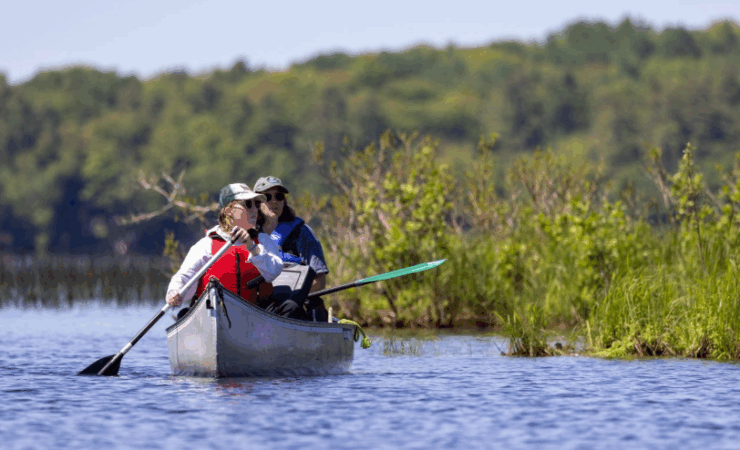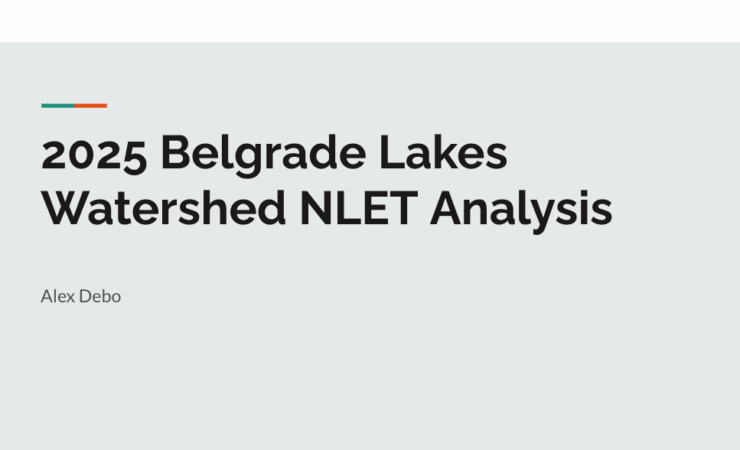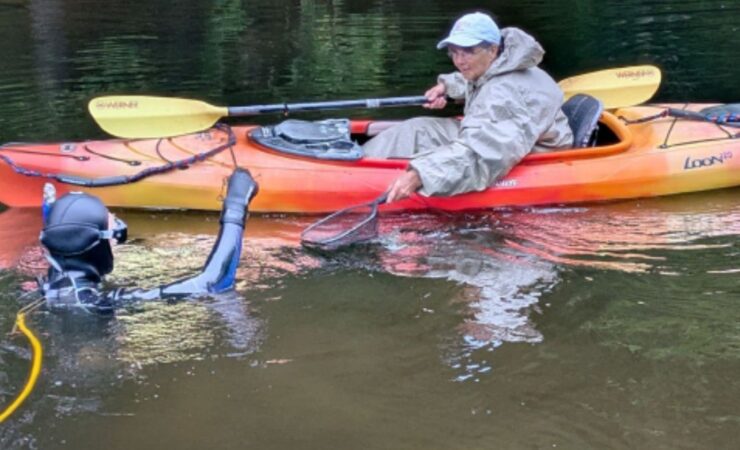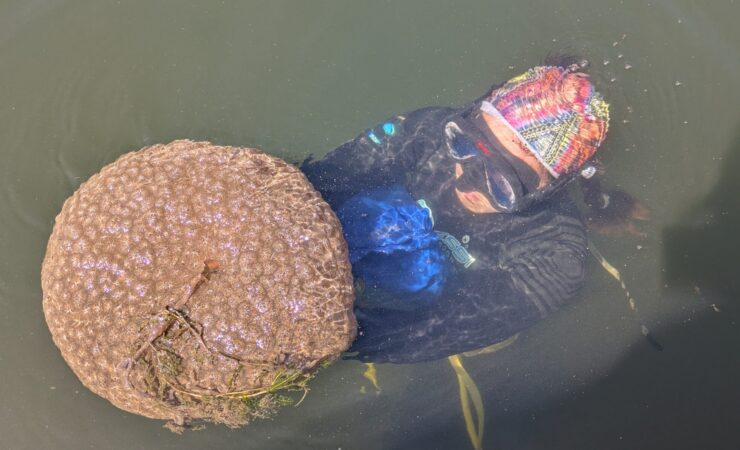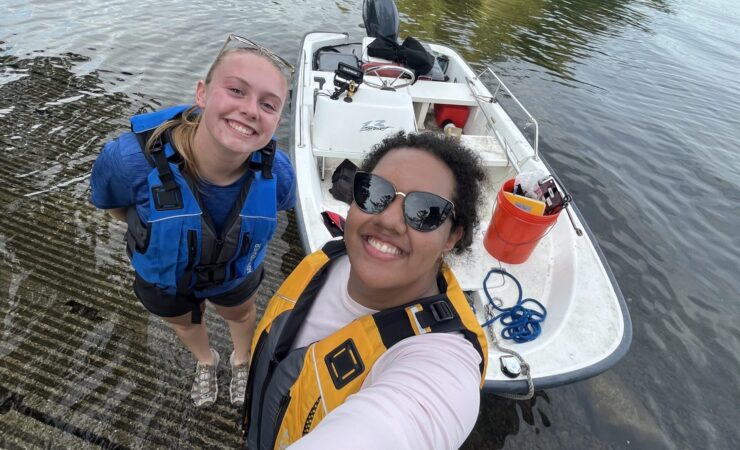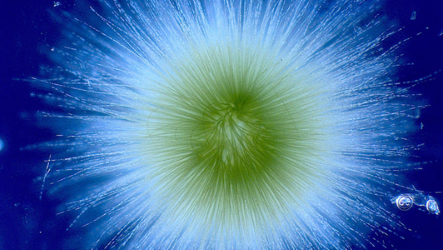
Gloeotrichia colony courtesy of Pete Countway
If you have been on Great Pond or Long Pond lately, you have probably noticed an increase in large green blobs floating around. These are a type of cyanobacteria called Gloeotrichia. Gloeo can produce toxins, but studies on Great Pond and Long Pond have not detected levels of concern. Throughout North America gloeo has been appearing more in frequently relatively clear lakes during late summer and fall. The gloeo colonies develop in the bottom waters near sediment containing phosphorus (P), then they adjust their buoyancy with gas vesicles and rise to the surface where they can be distributed horizontally by wind-driven water currents.
If you have more questions about Gloeo or would like to join our volunteer Gloeo monitoring program on your shoreline, please e-mail matt.farragher@7lakesalliance.org, danielle.wain@7lakesalliance.org, or stop by our office located at 137 Main Street, Belgrade Lakes.
Gloeotrichia Fact Sheet
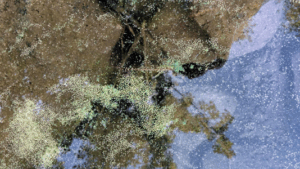
Photo courtesy of Lake Stewards of Maine

Gloeotrichia in Great Pond (June 30, 2025)

